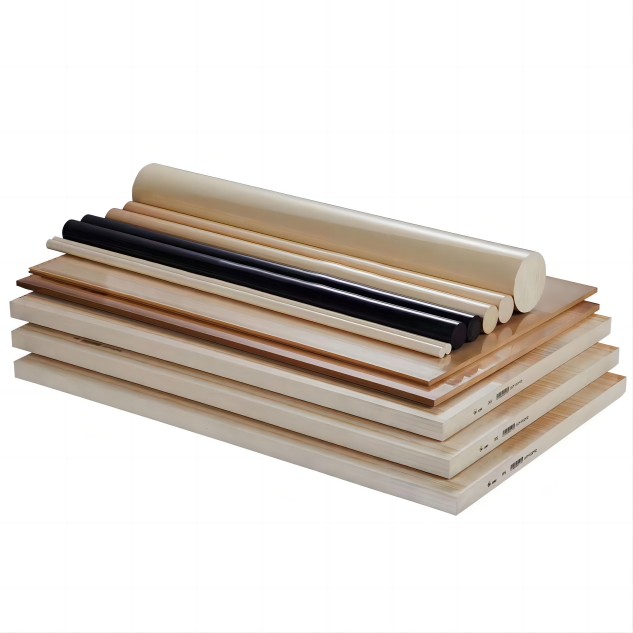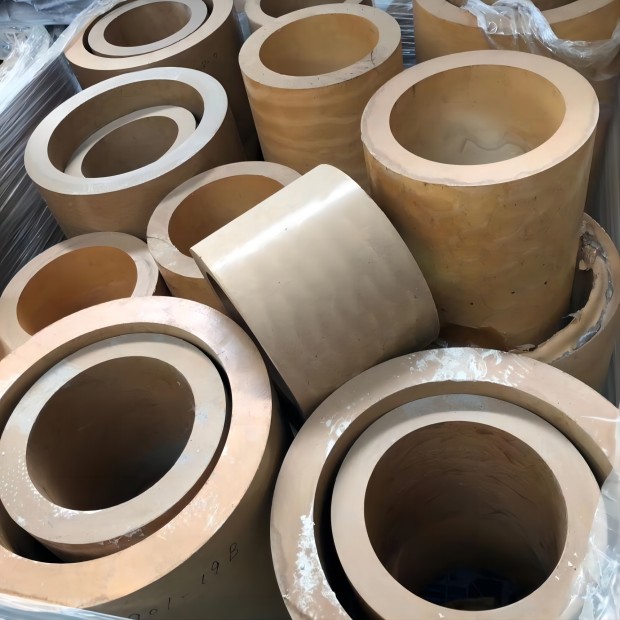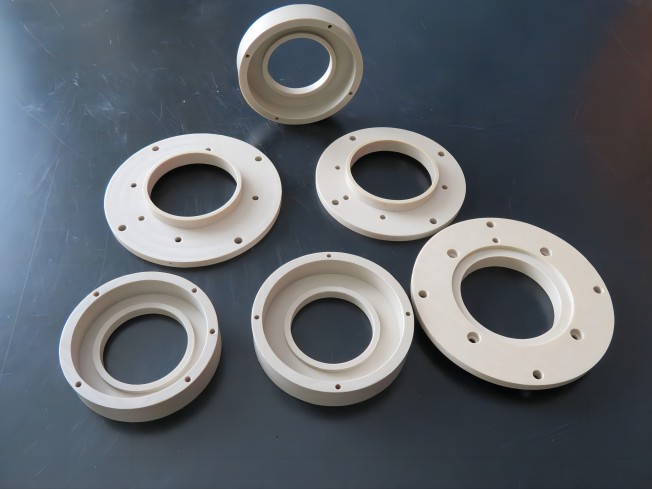Modification and application of PPS
July 16, 2023
1.What is PPS Polyphenylene Sulfide (PPS) has the advantages of high mechanical strength, high temperature resistance, high flame retardancy, chemical resistance; hard and brittle, high crystallinity, flame retardant, good thermal stability, high mechanical strength, excellent electrical properties. Polyphenylene sulfide PPS is one of the best varieties of engineering plastics in terms of heat resistance, generally greater than 260 degrees, chemical resistance is second only to, and mobility is second only to nylon. In addition, it also has the advantages of molding shrinkage is small (about 0.8%), low (about 0.02%), good fire resistance, good resistance to vibration fatigue, etc. The development of PPS is mature, the global production capacity of 50,000 tonnes / year or more, and its price is relatively low, compared to the hundreds of dollars per kilogram at any time of the other special engineering plastics, cost-effective, often used as a structural polymer materials, and applied to different fields. Polyphenylene sulfide (PPS) and Polyetheretherketone (PEEK), polysulfone (PSF), Polyimide ( PI ), polyarylate (PAR), liquid crystal polymers (LCP) together known as the 6 major special engineering plastics. The softening point of PPS is 277-282°C, Tg is 85-93°C. PPS has excellent performance, especially through the reinforcement, modification, blending alloying and in-situ composite technology made of a wide range of composite materials. However, PPS has poor impact resistance, brittle fatal shortcomings. Unmodified PPS is brittle and has a low heat deflection temperature, which affects its application areas and scope.  2. Why PPS modification In order to further improve the performance of PPS, to expand the scope of use, it must be modified, the main direction of modification are. Improvement of strength Improvement of impact properties Improve the lubricity. Improvement of electrical properties and the development of blended materials with special properties. Alloying new materials Studies have shown that PPS can still have good compatibility with other polymers after adding inorganic fillers, which creates favourable conditions for its alloying and composite modification. The earliest successful development of PPS and fluoroplastics co-mixed gold, and since then formed a series of alloys. PPS alloying tensile strength, bending strength, impact resistance, heat resistance has increased dramatically for the further implementation of extrusion, blow molding process provides the possibility. At present, the world's sales of PPS composite modification of more than 200 varieties, mainly GF reinforced, carbon fibre (CF) reinforced, inorganic filler-filled, GF and filler-filled enhancement of blended modification. 3. What are the PPS modification programmes? Antistatic PPS PPS powder 50% (mass fraction, the same below), natural flake graphite 5%, electrically conductive graphite 2%, calcium sulfate dihydrate micropowder 22%, GF 21%. Test results show that: the formulation of anti-static, molding and processing fluidity, mechanical properties and dimensional stability are excellent, can be applied to VCR, TV and computer discs and optical drives, as well as the requirements of anti-static optical and electrical equipment or electromagnetic devices. Fibre filled PPS PPS 18% ~ 54%, polyphenylene ether (PPE) 6% ~ 42%, 40% of inorganic fibres, the appropriate amount of compatibilizer. Test results show that: the formulation of heat resistance, dimensional stability is good, can be used in automotive cylinder head. Inorganic filled PPS Lubrication and wear resistance of PPS Polytetrafluoroethylene (PTFE) 20% to 60%, PPS 40% to 80%. Test results show that: the formula has both PPS moulding processability and mechanical strength, and has PTFE excellent lubricity, can be applied to anti-wear and wear-resistant materials. PPS and engineering plastics alloys PPS 40% ~ 90%, polyimide (PI) 5% ~ 55%, PPE 5% ~ 55%, appropriate amount of compatibilizer. Test results show that: the formulation of the product is easy to paint, with high impact performance and dimensional stability, can be applied to automotive exterior materials. High rigidity, high heat-resistant PPS formulations Linear PPS 40%, linear unsaturated compounds (linear unsaturated compounds with hydrocarbon, carbonyl, anhydride or epoxy functional groups) 40%, pearlescent mica powder 8%, organic or inorganic fibres 12%. Test results show that the formulation has excellent heat resistance and rigidity, as well as good processability, impact resistance and lubricity, and can be used as cast sealing materials for electrical, electronic and precision instruments. Zinc oxide whisker (ZnOw ) reinforced PPS Nano-SiO2 modified PPS PPS 100 parts, Nano-SiO2 3.0 parts, coupling agent 0.1 ~ 1.0 parts, other additives appropriate amount. Test results show that Nano-SiO2 can significantly improve the mechanical properties and comprehensive performance of PPS, fully demonstrating the excellent characteristics of inorganic nanoparticles in plastic modification.
2. Why PPS modification In order to further improve the performance of PPS, to expand the scope of use, it must be modified, the main direction of modification are. Improvement of strength Improvement of impact properties Improve the lubricity. Improvement of electrical properties and the development of blended materials with special properties. Alloying new materials Studies have shown that PPS can still have good compatibility with other polymers after adding inorganic fillers, which creates favourable conditions for its alloying and composite modification. The earliest successful development of PPS and fluoroplastics co-mixed gold, and since then formed a series of alloys. PPS alloying tensile strength, bending strength, impact resistance, heat resistance has increased dramatically for the further implementation of extrusion, blow molding process provides the possibility. At present, the world's sales of PPS composite modification of more than 200 varieties, mainly GF reinforced, carbon fibre (CF) reinforced, inorganic filler-filled, GF and filler-filled enhancement of blended modification. 3. What are the PPS modification programmes? Antistatic PPS PPS powder 50% (mass fraction, the same below), natural flake graphite 5%, electrically conductive graphite 2%, calcium sulfate dihydrate micropowder 22%, GF 21%. Test results show that: the formulation of anti-static, molding and processing fluidity, mechanical properties and dimensional stability are excellent, can be applied to VCR, TV and computer discs and optical drives, as well as the requirements of anti-static optical and electrical equipment or electromagnetic devices. Fibre filled PPS PPS 18% ~ 54%, polyphenylene ether (PPE) 6% ~ 42%, 40% of inorganic fibres, the appropriate amount of compatibilizer. Test results show that: the formulation of heat resistance, dimensional stability is good, can be used in automotive cylinder head. Inorganic filled PPS Lubrication and wear resistance of PPS Polytetrafluoroethylene (PTFE) 20% to 60%, PPS 40% to 80%. Test results show that: the formula has both PPS moulding processability and mechanical strength, and has PTFE excellent lubricity, can be applied to anti-wear and wear-resistant materials. PPS and engineering plastics alloys PPS 40% ~ 90%, polyimide (PI) 5% ~ 55%, PPE 5% ~ 55%, appropriate amount of compatibilizer. Test results show that: the formulation of the product is easy to paint, with high impact performance and dimensional stability, can be applied to automotive exterior materials. High rigidity, high heat-resistant PPS formulations Linear PPS 40%, linear unsaturated compounds (linear unsaturated compounds with hydrocarbon, carbonyl, anhydride or epoxy functional groups) 40%, pearlescent mica powder 8%, organic or inorganic fibres 12%. Test results show that the formulation has excellent heat resistance and rigidity, as well as good processability, impact resistance and lubricity, and can be used as cast sealing materials for electrical, electronic and precision instruments. Zinc oxide whisker (ZnOw ) reinforced PPS Nano-SiO2 modified PPS PPS 100 parts, Nano-SiO2 3.0 parts, coupling agent 0.1 ~ 1.0 parts, other additives appropriate amount. Test results show that Nano-SiO2 can significantly improve the mechanical properties and comprehensive performance of PPS, fully demonstrating the excellent characteristics of inorganic nanoparticles in plastic modification.  4.PPS high-end applications The application of PPS is centred on its excellent heat resistance, taking into account its friction reduction and self-lubrication, chemical stability, dimensional stability, flame retardancy, electrical insulation and dielectric properties and excellent mechanical properties, etc., so that it can be widely used as a non-metallic material with high temperature resistance, high flame retardancy, high rigidity, high electrical properties and high adhesion in aerospace, nuclear, electronic and electrical appliances, food and pharmaceutical industries, and other high-tech fields. PPS Due to the inherent flame retardancy of PPS, it is an intrinsic flame retardant material, so that it does not need to add flame retardant to achieve high flame retardant grade, and thus is considered by the National Aeronautics and Space Administration (NASA) is the best fire safety plastics, and has been selected as one of the eight Special Materials for space technology. PPS also gained a place in the field of civil industry, such as in the chemical industry, can be made to synthesise, transport, storage of materials, reaction tanks, pipelines, valves, chemical pumps and so on; In the machinery industry, it can be used to make impellers, blades, gears, eccentric wheels, bearings, clutches, wear-resistant parts and transmission parts; PPS for electronic connectors In the electrical and electronic aspects, can make transformer skeleton, high frequency coil skeleton, plugs, sockets, wiring racks, contactor drum drum piece and a variety of precision parts; Engine piston ring In the automotive industry, it can be used to make engine piston rings, exhaust cycle valves, automotive flow valves and so on. In addition, PPS can also be used in many other fields, such as environmental protection: PPS fibre filter media, used in smelting, chemical industry, building materials, thermal power, coal-fired boilers and other industries in the high temperature and harsh working conditions, is a high-quality and highly efficient high-temperature filter media; tableware field: used in the production of chopsticks, spoons, bowls and plates, and other tableware.
4.PPS high-end applications The application of PPS is centred on its excellent heat resistance, taking into account its friction reduction and self-lubrication, chemical stability, dimensional stability, flame retardancy, electrical insulation and dielectric properties and excellent mechanical properties, etc., so that it can be widely used as a non-metallic material with high temperature resistance, high flame retardancy, high rigidity, high electrical properties and high adhesion in aerospace, nuclear, electronic and electrical appliances, food and pharmaceutical industries, and other high-tech fields. PPS Due to the inherent flame retardancy of PPS, it is an intrinsic flame retardant material, so that it does not need to add flame retardant to achieve high flame retardant grade, and thus is considered by the National Aeronautics and Space Administration (NASA) is the best fire safety plastics, and has been selected as one of the eight Special Materials for space technology. PPS also gained a place in the field of civil industry, such as in the chemical industry, can be made to synthesise, transport, storage of materials, reaction tanks, pipelines, valves, chemical pumps and so on; In the machinery industry, it can be used to make impellers, blades, gears, eccentric wheels, bearings, clutches, wear-resistant parts and transmission parts; PPS for electronic connectors In the electrical and electronic aspects, can make transformer skeleton, high frequency coil skeleton, plugs, sockets, wiring racks, contactor drum drum piece and a variety of precision parts; Engine piston ring In the automotive industry, it can be used to make engine piston rings, exhaust cycle valves, automotive flow valves and so on. In addition, PPS can also be used in many other fields, such as environmental protection: PPS fibre filter media, used in smelting, chemical industry, building materials, thermal power, coal-fired boilers and other industries in the high temperature and harsh working conditions, is a high-quality and highly efficient high-temperature filter media; tableware field: used in the production of chopsticks, spoons, bowls and plates, and other tableware. In short, after modification, PPS can make up for the lack of performance in all aspects, cost-effective, can be applied to different areas.






